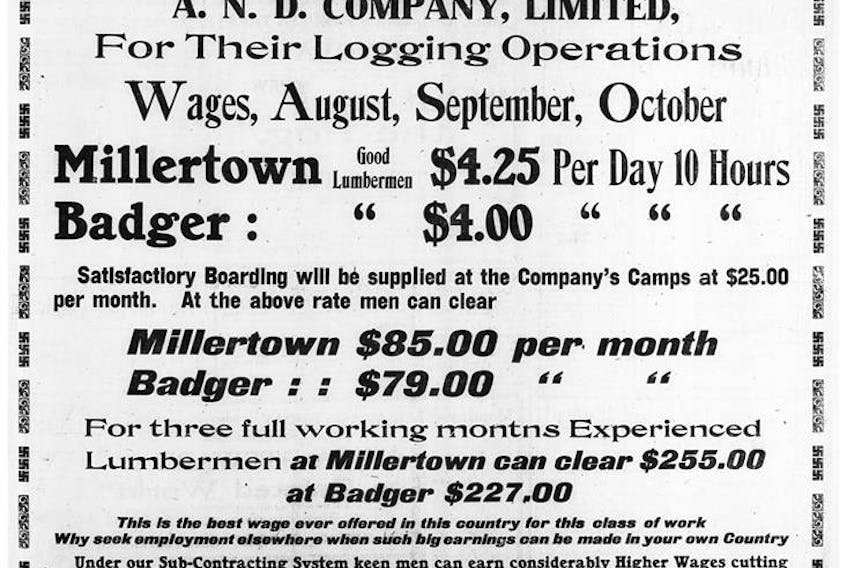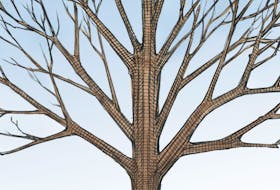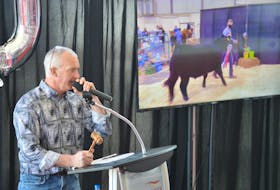“Of all the traditional crafts prized and celebrated in this province, rug hooking is one of the most extraordinary. It combines the simplest of techniques and materials that are often readily at hand with a potential to create objects that are complex, colourful and uniquely expressive. We can look at a mat and imagine its creator: she is sitting in her kitchen on a winter evening, cutting fabric strips from a worn dress, lost in her imaginings.”
That is part of the preface to the book “Hooked Mats of Newfoundland & Labrador: Beauty Born of Necessity”. The writer was Anne Manuel, at the time, Executive Director of the Craft Council here. That paragraph is a picture in itself. The profusely illustrated 136-page book was compiled by The Rug Hooking Guild and issued by DRC Publishing, St. John’s, in 2006.
Antiques can be difficult to live with and yet impossible to discard. From complex to simple in design, our traditional hooked mats drew out the creator’s imagination, as Manuel suggests. To my mind, they are a true folk-art where you see the desire to decorate evolve along with the manufacture of a practical household item.
Some years ago, a daughter of Trinity told me that hooked mats once fell out of favour when people suspected that they harboured (or could harbour) TB germs. Hooked mats were sometimes scrubbed at the landwash where brine both made them brighter and sterilized them of any lurking germs. There was another time when they were shunned because they suggested poverty.
Jessie Mifflin in “Journey to Yesterday: in the Out-Harbours of Newfoundland” (Harry Cuff Publications, 1983) wrote in her chapter on “The old-fashioned outport kitchen” that “the kitchen floor often had a covering made from sail canvas covered with three or four coats of vivid red paint which gave it a hard and shiny surface and added to the coziness of the room. However, if it could be afforded, at all there was ‘boughten’ canvas on the floor and always three or four brightly patterned hooked rugs.”
When she got to the point of describing the outport home’s parlour, Mifflin noted, “Other articles of parlour furnishings considered desirable were a carpet mat instead of a hooked one for the floor.”
Mifflin was a daughter of Bonavista.
•••
‘Nothing short of disastrous’
Out here in the far east we are a small market where the cost of transportation to get the essentials to us has a considered impact on our cost of living. We often hear that. I thought the following portion of a newspaper editorial from 50 years ago might show that there’s nothing new under the sun:
The Evening Telegram, Friday, Sept. 29, 1967: Freight Rates go Wild
“The freight rate increases announced by the CNR for the Atlantic provinces are nothing short of disastrous. If the railway is allowed to have its way, the cost of living in this Province and, to a lesser extent its neighbouring provinces, is going to rise sharply. The C NR claims that the rates are dictated by economics. But the principle was laid down many years ago by the Federal Government that the Canadian freight rates structure must not be dictated by economics alone. It is part of the business of Canada as a nation to see that the economics of their geography does not bear too heavily on the ‘fringe provinces.’ We already have the lowest earning power and the highest cost of living in Canada.”
Paul Sparkes is a longtime journalist intrigued by the history of Newfoundland and Labrador. E-mail: [email protected].









